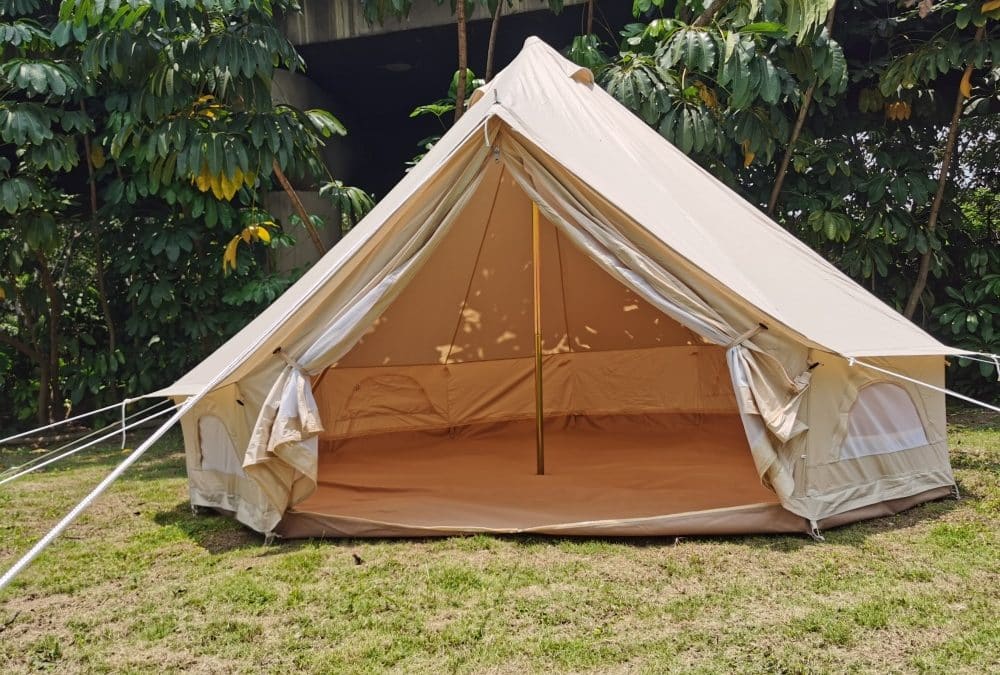Table of Contents
- Introduction to Eco-Friendly Glamping
- Why Choose Sustainable Tents?
- Top Sustainable Tent Options
- Canvas Tents
- Recycled Material Tents
- Bamboo Frame Tents
- Features to Look for in Eco-Friendly Glamping Tents
- How to Choose the Right Sustainable Tent
- Benefits of Eco-Friendly Glamping
- Conclusion and Call to Action
Introduction to Eco-Friendly Glamping
Glamping, or glamorous camping, combines the luxuries of hotel accommodation with the natural allure of camping. For those who cherish both comfort and sustainability, eco-friendly glamping tents are the perfect choice. These tents offer a way to enjoy the great outdoors without leaving a heavy footprint on the environment.
Why Choose Sustainable Tents?
Choosing sustainable tents for glamping not only supports environmental conservation but also enhances your camping experience. Eco-friendly materials are often more natural, breathable, and harmonious with the surroundings, providing a more authentic and serene glamping experience.
Top Sustainable Tent Options
Canvas Tents
Canvas tents are a popular eco-friendly option due to their durability and natural materials. They are typically made from cotton, which is biodegradable and less impactful on the environment compared to synthetic fabrics.
- Pros:
- Highly durable and can last many years if properly cared for.
- Provides natural insulation properties.
- Cons:
- Heavier than synthetic tents, making them less ideal for backpacking.
- Requires more maintenance to prevent mold and mildew.
Recycled Material Tents
Tents made from recycled materials are an excellent choice for eco-conscious campers. These tents utilize fabrics that have been repurposed from other products, reducing waste and the demand for new raw materials.
- Pros:
- Reduces landfill waste and the use of virgin resources.
- Often lighter than traditional canvas tents.
- Cons:
- Can vary in quality depending on the source materials.
- May not be as durable as canvas tents.
Bamboo Frame Tents
Bamboo frame tents stand out for their use of renewable materials. Bamboo is one of the fastest-growing plants on Earth, making it an ideal choice for sustainable construction.
- Pros:
- Extremely strong and durable.
- Bamboo is naturally resistant to pests and fungi.
- Cons:
- Can be more expensive due to the cost of bamboo.
- Less common and might be harder to find.
Features to Look for in Eco-Friendly Glamping Tents
When shopping for the best sustainable tent options, consider the following features:
- Materials: Look for natural or recycled fabrics.
- Durability: Ensure the tent can withstand the elements and last several seasons.
- Design: Opt for tents with features that enhance airflow and comfort.
- Certifications: Check for environmental certifications like the Global Organic Textile Standard (GOTS).
How to Choose the Right Sustainable Tent
Choosing the right tent involves balancing your needs with environmental considerations. Consider the size, weight, and ease of setup of the tent, as well as the specific eco-friendly features it offers. It’s also important to think about the climate and terrain of your camping destination.
Benefits of Eco-Friendly Glamping
Eco-friendly glamping allows you to:
- Reduce Environmental Impact: Minimize your carbon footprint and waste production.
- Connect with Nature: Experience the natural environment in a more sustainable way.
- Support Green Businesses: Choosing eco-friendly products promotes the growth of green technologies and industries.
Conclusion and Call to Action
Eco-friendly glamping is not just a trend; it’s a responsible choice for enjoying the great outdoors. By choosing sustainable tent options, you contribute to conservation efforts and ensure that future generations can also enjoy the beauty of nature. Consider investing in an eco-friendly tent for your next glamping trip and experience the perfect blend of luxury and sustainability.
Ready to make your next adventure more sustainable? Start exploring eco-friendly glamping tents today and plan your eco-conscious getaway!
Check out our featured post: Discover the Finest Luxury Resort Tents for Your Next Getaway

